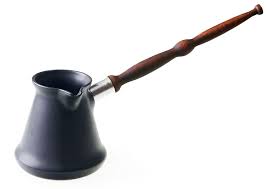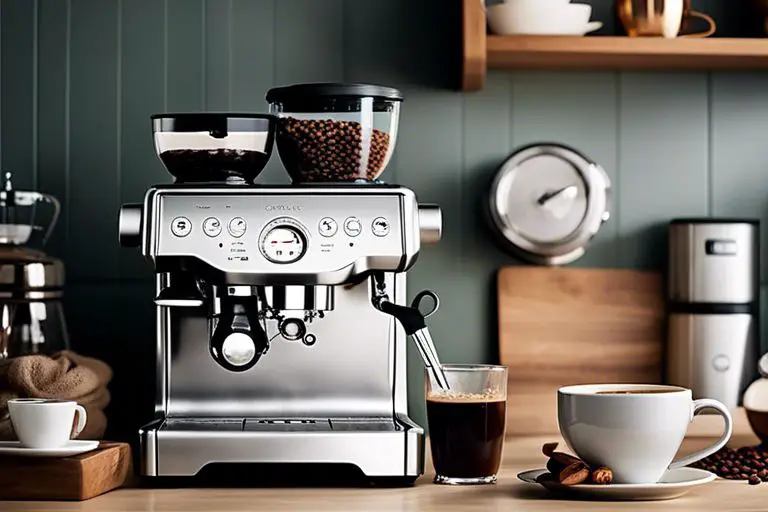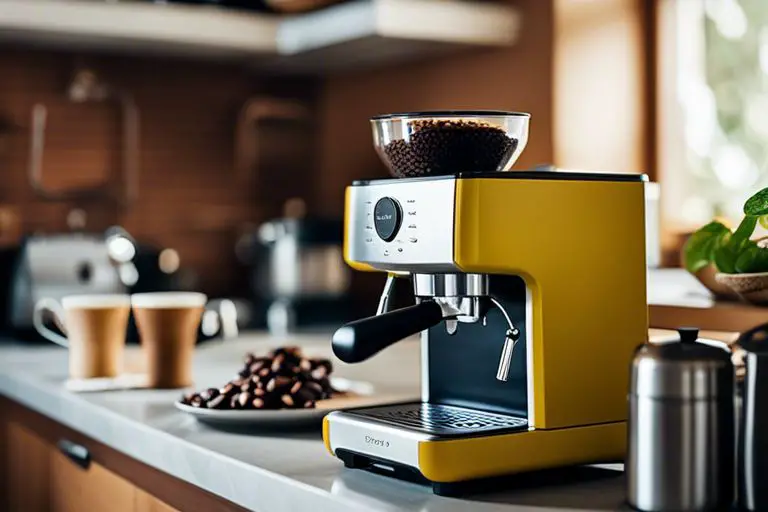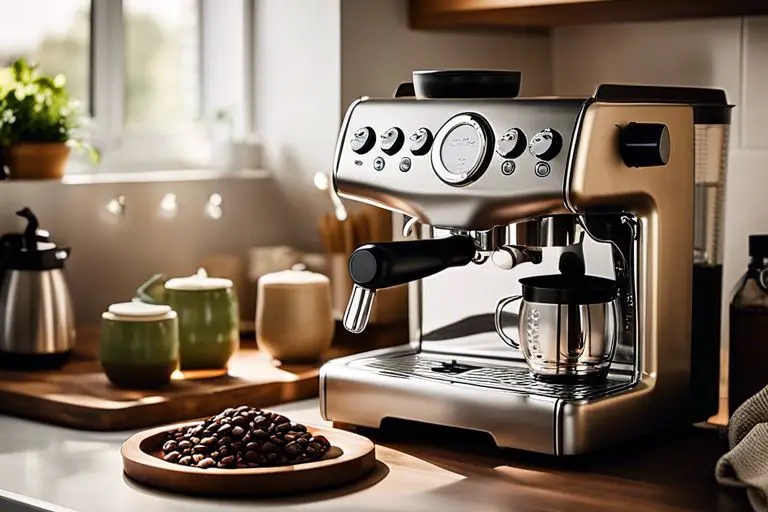If you make Turkish coffee using old traditional methods it will taste very bitter and unpleasant requiring lots of sugar to make it better. Learning how to make Turkish coffee using modern brewing methods combines the old and the new to create a totally enchanting beverage.
With a little bit of care, you can transform one of the oldest known ways to make coffee using simple to apply techniques that will massively improve how good Turkish coffee tastes.
Before we get into the exact method used by a World Champion of making traditional Turkish coffee it’s worth knowing the key things that make up a great cup of coffee regardless of the brewing method:
Good quality coffee beans
It doesn’t matter how good your method is, if you use poor quality coffee then the quality of what ends up in your cup won’t taste very good.
Turkish coffee is strong and concentrated with a very distinct flavour profile that is better enjoyed with medium or dark roast coffee beans. Light roast coffee is not suitable for Turkish coffee.
Get yourself some decent coffee beans that have been recently (the last month) freshly roasted and only grind them just before you make your coffee to retain maximum freshness and flavour.
Brewing ratio
This is the amount of coffee you use in relation to the amount of water you add.
If you just throw in a couple of teaspoons of coffee and some water then you will end up doing something different every time.
The amount of water and coffee balanced correctly hugely affects the overall flavour.
This is especially important with Turkish coffee because it is drunk black and therefore you have less opportunity to mask bad coffee with milk to change the flavour.
This article explains in more detail:
Water
About 90% of what ends up in your cup is going to be water with the rest being coffee that has dissolved into the water.
The quality of the water makes a big difference to flavour so you should always use filtered water or spring water for the best-tasting coffee.
And it doesn’t have to be expensive either. The big 2 litre bottles I use normally sell for 17p in Tesco or Asda and they come straight from a Spring.
There is nothing wrong with tap water but it has been treated with various chemicals to ensure its purity.
This article explains more:
What is the best water for coffee
Coffee temperature
Many Turkish coffee recipes or methods will tell you to boil the coffee and, in some cases, boil it three times.
This is a very bad idea and will only help to give the coffee a nasty bitter taste that will require lots of sugar to get rid of and will ruin the natural flavour of the coffee.
Coffee should never be boiled and many studies have proven that 93 degrees Celsius is the best temperature to extract the best flavour.
You don’t need to go to the extent of using a thermometer to get the exact temperature but when you see the coffee starting to bubble and reach boiling point it should be removed from the heat
Brewing Time
The most common mistake that gets made when making Turkish coffee is the amount of time taken to make the coffee, or brewing time.
For some reason, over the years it has become common to boil the coffee 3 times. Boiling is bad but boiling three times and for a long time simply ruins the flavour.
A lot of work has been done with different brewing methods to determine the optimum time for the coffee to mix with the water.
For example, coffee made with a cafetière should be mixed with water for about 4 minutes before plunging and pouring.
With espresso, water gets pumped through ground coffee at high pressure for about 25 seconds.
Each brewing method is different and Turkish coffee is no exception. We will explain the method used by a Turkish coffee expert.
All of these things are not just things that have been made up, they have been developed over the last 30 or so years by huge coffee chains like Starbucks and Costa.
It’s one of the reasons why these large high street coffee chains have become so popular, because they have worked out how to make a decent cup of coffee.
One thing they don’t do though is offer Turkish coffee. If you use the proven principles above and combine them with some Turkish tradition then you can enjoy Turkish coffee like never before.
Here’s how:
What equipment is required to make Turkish Coffee?
Coffee is brewed in a number of different ways using a number of different types of coffee makers and coffee machines but Turkish coffee has its very own unique coffee maker called a Turkish Cezve or Ibrik.
In Turkey they call it a Cezve (Jes-ve) and everywhere else they call it an Ibrik.
The reason why is unclear but the main thing is that is doesn’t matter because they are both the same thing – a traditional Turkish coffee maker that you brew Turkish coffee in.
Traditionally it is made of copper but it doesn’t have to be, stainless steel or other metals don’t affect the outcome of how the coffee tastes.
This is a modern take on a Turkish Ibrik:
Although it looks authentic and different, the shape or what it’s made of is not a factor in the end result so the good news is that you don’t have to go out and buy an Ibric in order to make great Turkish coffee.
Any small pot you already have in the kitchen will work perfectly well, ideally with a spout because it will make it easier to pour but it doesn’t have to have one.
So one small pot and a spoon. You’ll also need a cheap set of digital scales and a cheap coffee grinder. That’s all the equipment you need and you are good to go.
The best recipe for Turkish coffee
This is not a method that has been passed down many generations or has any kind of secret ingredients contained within it.
It’s a method that contains the scientific best practice for brewing coffee and combines that with traditional Turkish methods to get a fantastic tasting cup of Turkish coffee.
The measurements are for 1 cup. Simply increase the quantities accordingly to make multiple cups.
Finely grind your coffee
Take 7 grams of freshly roasted medium to dark roast coffee beans and grind to a fine powder.
Use some scales to measure out 7 grams of coffee per cup. It only takes a few seconds and if you don’t have any scales it’s worth investing in some. They are super cheap and essential for getting the right balance of coffee and water.
I use these scales.
Grind the beans in a coffee grinder. You don’t need to spend a fortune on an expensive burr grinder. A blade coffee grinder will do the job just fine. Here some suggestions:
Different types of coffee brewing methods require different levels of grind fineness.
Cafetière coffee requires a coarse grind and espresso a fine grind.
Turkish coffee requires a super fine grind that is even finer than espresso. Grind your coffee until it looks like a powder, grind for around 60 seconds in your grinder.
The reason it needs to be so fine is that the coffee is not filtered through anything it’s just mixed with water and settles to the bottom of the cup once poured.
Brew the coffee
Add the coffee to a small pot and pour hot water (about 60 degrees Celsius) over the coffee in a circular motion.
Use a 1:10 ratio of water to coffee, so in this example 70 grams of water as we are using 7 grams of coffee.
Stir your coffee but not too much. Give it around 10-15 stirs so that it mixes well with the water and then put it on a low to medium heat.
Brew for about 2 minutes but avoid boiling. You will know it’s ready when a foam appears on the top.
It’s also very common to stir the coffee when brewing but this is not a good idea as you risk over-extraction and bitterness.
After about two minutes remove from the heat and pour straight into a cup.
Let it settle
You need to leave the coffee in the cup for around 4-5 minutes because it will be too hot to drink straight away.
Most importantly the coffee grounds need time to settle to the bottom of the cup and that will take a good few minutes to happen.
After 5 minutes it’s ready.
If you like it with sugar then you need to add that during the brewing process. Never add sugar and stir once it’s in your cup as you’ll end up with a mouthful of coffee grounds.
Here is a video showing the 2013 World Ibrik champion brewing the perfect Turkish coffee:
Is Turkish coffee stronger than espresso?
Turkish coffee is not stronger than espresso as it is more diluted than espresso because it has a different water to coffee ratio.
Espresso has a brewing ratio of 2:1 ( 2 parts water to 1 part coffee) and Turkish coffee a brewing ratio of 7:1 (7 parts water to 1 part coffee)
It is common to add 20grams of ground coffee for an espresso in order to get 40 grams of espresso and 7 grams of ground coffee with 70 grams of water for Turkish coffee.
Can you make espresso with Turkish coffee?
It’s not a good idea to make espresso with Turkish coffee because Turkish coffee is ground much finer than espresso and the water will not be able to force its way through making it very over-extracted.




